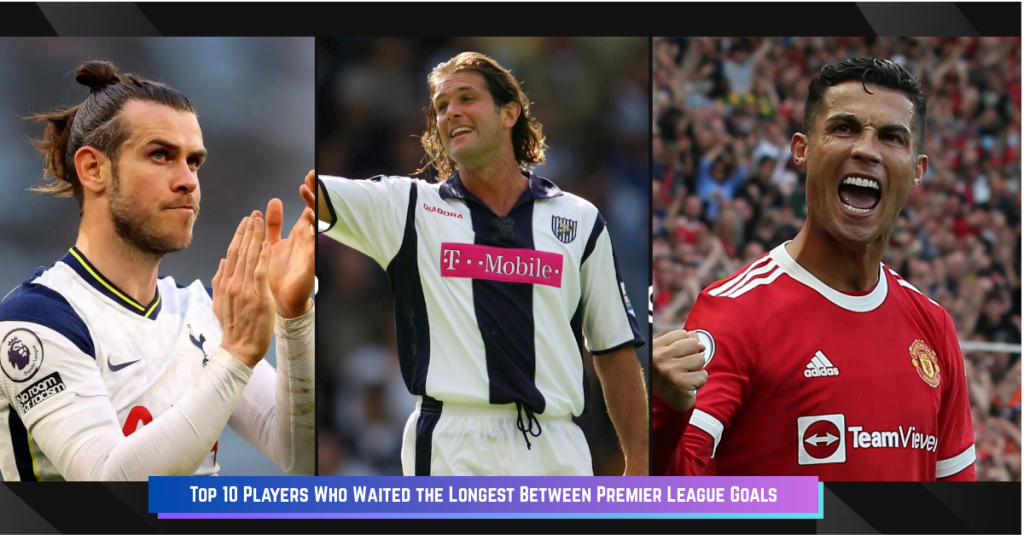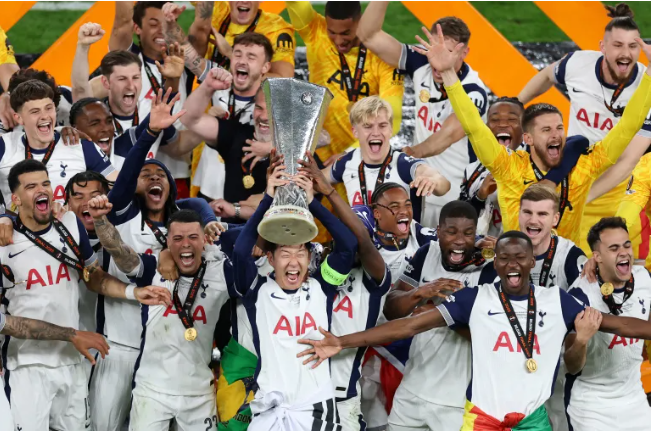In over three decades of Premier League history, fans have celebrated countless spectacular strikes and witnessed some of the greatest goal scorers in football. While legends like Alan Shearer and Harry Kane have consistently delivered Premier League goals season after season, others have endured remarkable droughts before finding the net again. For some, the wait was due to long spells abroad, time spent in lower divisions, or a change in playing position.
In rare cases, the gap between two Premier League goals has stretched over a decade, making their eventual strikes all the more memorable. This countdown reveals the top 10 players who experienced the longest waits between Premier League goals, from global superstars to unexpected names who etched their place in this unusual statistic.
10. Gareth Bale

Gareth Bale’s Premier League goals record is one that tells the story of transformation and timing. Originally emerging at Tottenham Hotspur as a promising left-back and winger, Bale’s early years in the Premier League produced notable contributions before his explosive move into a more attacking role. His last Premier League goals for Tottenham in that first spell came in May 2013 against Sunderland, and after his high-profile transfer to Real Madrid he spent years away from Premier League action. When Bale returned to Spurs on loan in the 2020–21 season he rediscovered the net, scoring against Brighton in November 2020 — a gap of 2,723 days between Premier League goals.
That long interval is explained by his career abroad at elite clubs where he continued to score frequently, and by a spell of injuries and changing roles upon his return. For fans and statisticians examining Premier League goals, Bale’s drought is unusual because it’s not down to loss of form in England so much as a long absence from the competition. The narrative underlines how time spent overseas can turn a regular scorer in one era into a surprising entry on a list of long waits for Premier League goals years later.
9. Jamie Carragher
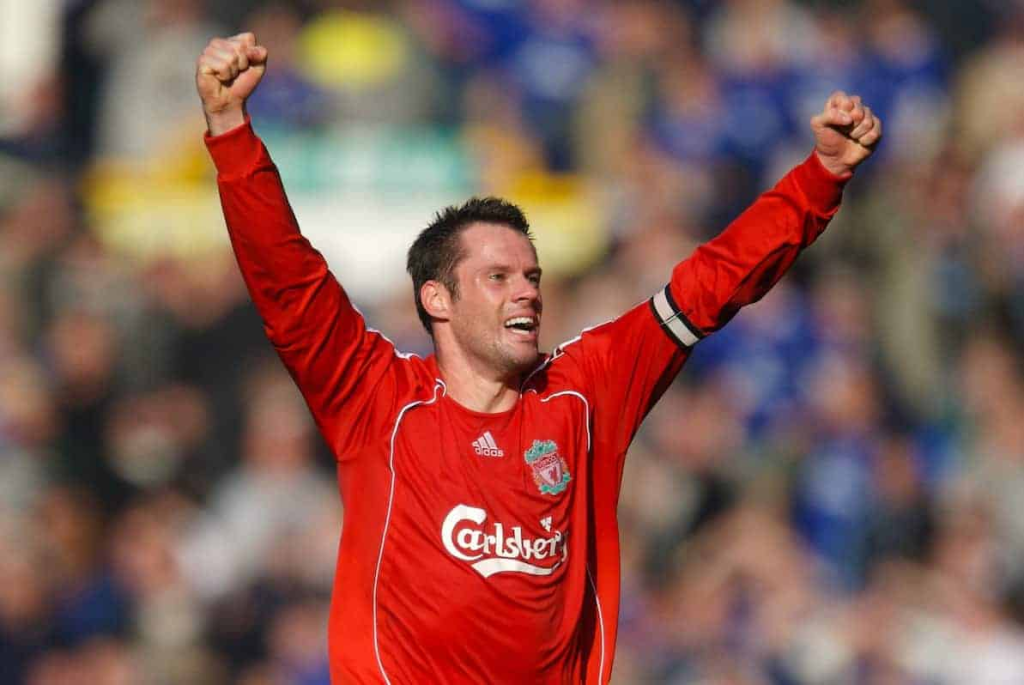
Jamie Carragher’s place among players with extended waits between Premier League goals highlights the contrasting roles defenders play in football. Primarily known for his defensive excellence at Liverpool and later as a pundit, Carragher’s Premier League goals were rare highlights in a long career of reliability at the back. After scoring against Southampton on 16 January 1999, he waited until 9 December 2006 to find the net again in a league match — an interval of 2,884 days. That gap covered hundreds of Premier League appearances during which Carragher’s focus was shut-down defending rather than scoring, and in that stretch he remained a key starter across multiple seasons.
When assessing Premier League goals by defenders, Carragher’s drought emphasizes that longevity and consistent selection often do not correlate with scoring frequency. The long gap is part of a narrative where a defender’s contributions are measured in tackles, interceptions and leadership rather than the number of Premier League goals. His rare goals became talking points precisely because they were infrequent, and that scarcity is why his drought ranks high on lists of the longest waits between league goals.
8. Ryan Babel

Ryan Babel’s career trajectory produced a noteworthy gap between Premier League goals that reflects a player moving between leagues and roles. After joining Liverpool and scoring in the late 2000s, Babel’s final goal for the club in the Premier League came in December 2010 against Aston Villa. He then spent sizeable portions of his career playing abroad — in Germany, the Netherlands, Turkey and other leagues — before returning to England with Fulham. When Babel struck against West Ham on 22 February 2019 it marked 3,000 days since his previous Premier League goal.
The drought is therefore less a reflection of a decline and more a product of transfers away from the Premier League and inconsistent appearances when back in England. For those tracking Premier League goals, Babel’s interval demonstrates how spells overseas can produce long statistical gaps in domestic tallies even while a player continues to score elsewhere. The pause between Premier League goals underscores the impact of club movement and how returning to the Premier League can rekindle scoring opportunities after many years away from that specific competition.
7. Stephen Quinn

Stephen Quinn’s Premier League goals gap tells the story of promotion, relegation and the changing fortunes of midfielders. Quinn scored for Sheffield United against Portsmouth on 13 January 2007 during a season that ended in relegation, which removed him from the Premier League stage for several years. He later joined Hull City and played a role in their rise, eventually scoring in Premier League action again in May 2015 against Arsenal — a wait of 3,033 days.
This interval is illustrative of players who move between divisions; a long absence from the Premier League can stretch a player’s top-flight goal drought into years. Quinn’s career saw him competing in lower leagues where opportunities to score in the Premier League simply did not exist, so when he returned to the top flight and netted it closed a long chapter. In the context of Premier League goals, Quinn’s story is a reminder that gaps between top-flight goals often reflect team trajectories, promotions and relegations rather than a consistent decline in an individual’s ability to contribute on the scoresheet.
Also Read:
6. Peter Whittingham
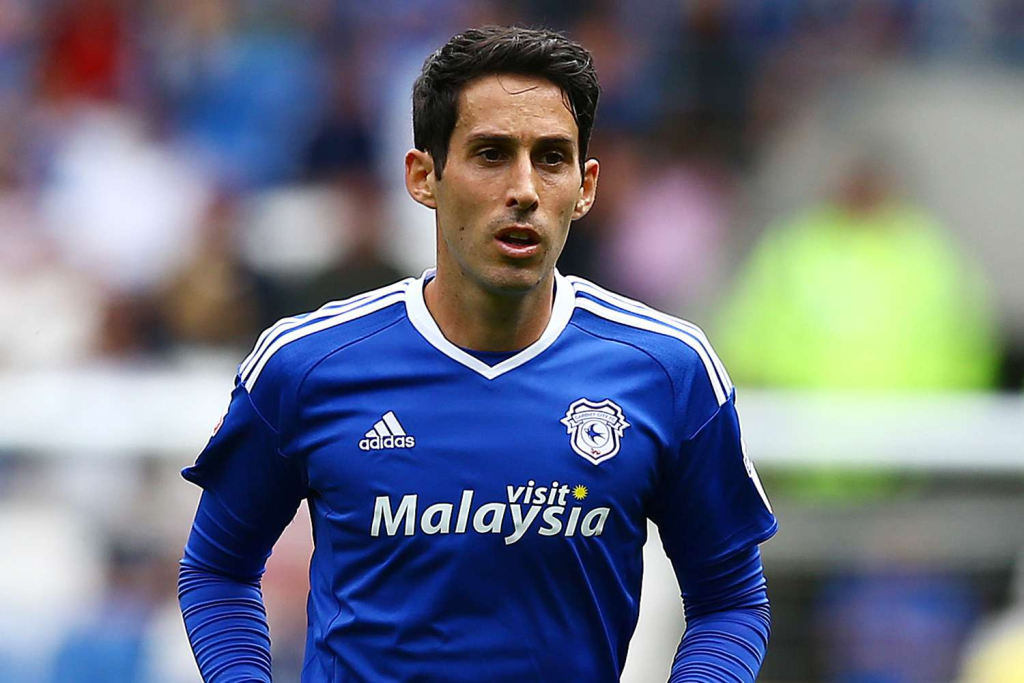
Peter Whittingham’s Premier League goals gap is a poignant example of a talented midfielder whose club career included both top-flight exposure and a long wait before returning to the Premier League scoresheet. Whittingham, who later became a Cardiff City icon, had a Premier League goal for Aston Villa on 6 October 2004 against Portsmouth. He then returned to the top flight with Cardiff after their promotion and scored in the Premier League versus Hull City on 14 September 2013 — a gap of 3,234 days.
That long interval came amid a career largely spent contributing goals and assists in the Championship, where Whittingham became a key player. The drought between Premier League goals reflects not a lack of scoring quality but the simple fact of spending significant seasons outside the top flight. For fans reviewing Premier League goals across eras, Whittingham’s wait highlights how promotion battles and changes in club status can extend a player’s gap between top-level goals despite continued success at other levels of English football.
5. Simon Charlton

Simon Charlton’s place on this list underscores how defenders and defensive full-backs can experience long waits between Premier League goals. Charlton scored against Manchester United on 10 May 1995 while at Southampton, and then did not record another Premier League goal until October 2004 for Bolton Wanderers against Portsmouth — a drought of 3,433 days. Much of Charlton’s career involved defensive responsibilities and moves across clubs where scoring was not his primary role, which explains the long gap.
Transfers, changing team positions and the differing tactical demands of full-backs across clubs contributed to a rare strike rate in the Premier League. When evaluating prolonged waits for Premier League goals, Charlton’s example shows how playing position and club moves can stretch the time between top-flight goals, even for players who are consistent starters. His long interval is part of a broader pattern where defenders’ scoring records are sporadic and thus any goals are more memorable, turning long waits into statistics that attract attention when compiled.
4. John Oster
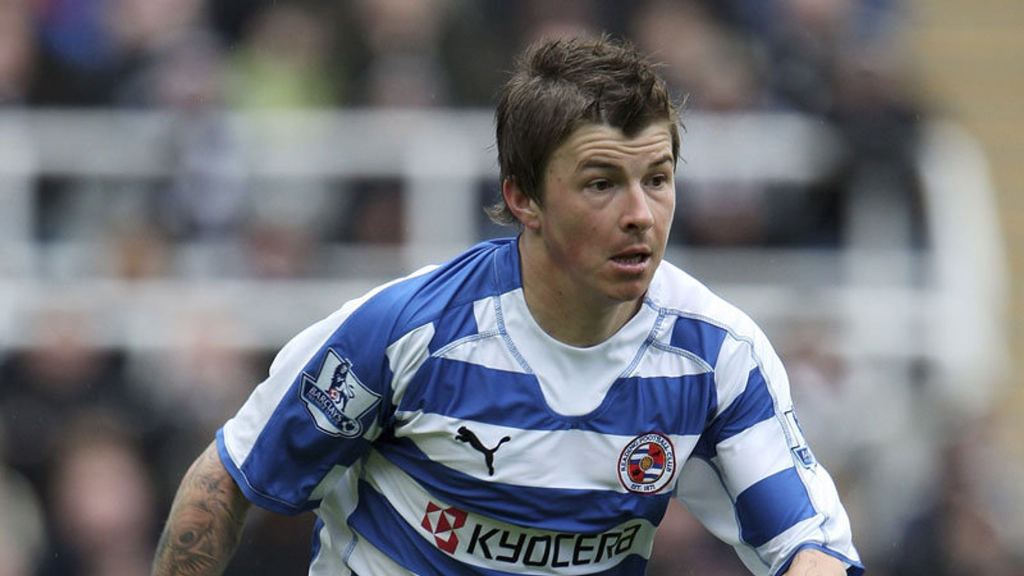
John Oster’s gap between Premier League goals is driven by a career path that moved through multiple clubs and finally back into the top flight with a long-awaited strike. Oster scored for Everton against Barnsley on 20 September 1997 but later left for other teams and endured loan spells which limited consistent Premier League minutes. He did not score in the Premier League again until February 2007 for Reading against Middlesbrough, closing an almost ten-year interval.
The lengthy wait reflects stagnation from frequent transfers and time spent outside the Premier League, where opportunities to add to a top-flight goal tally were minimal. When he finally netted again in the Premier League it punctuated a career marked by ups and downs, and it serves as an example of how Premier League goals totals can be fragmented by movement between divisions and clubs. For researchers and fans focused on Premier League goals, Oster’s drought is a reminder that long waits often include seasons where top-flight matches simply weren’t part of a player’s calendar.
3. Andy Johnson
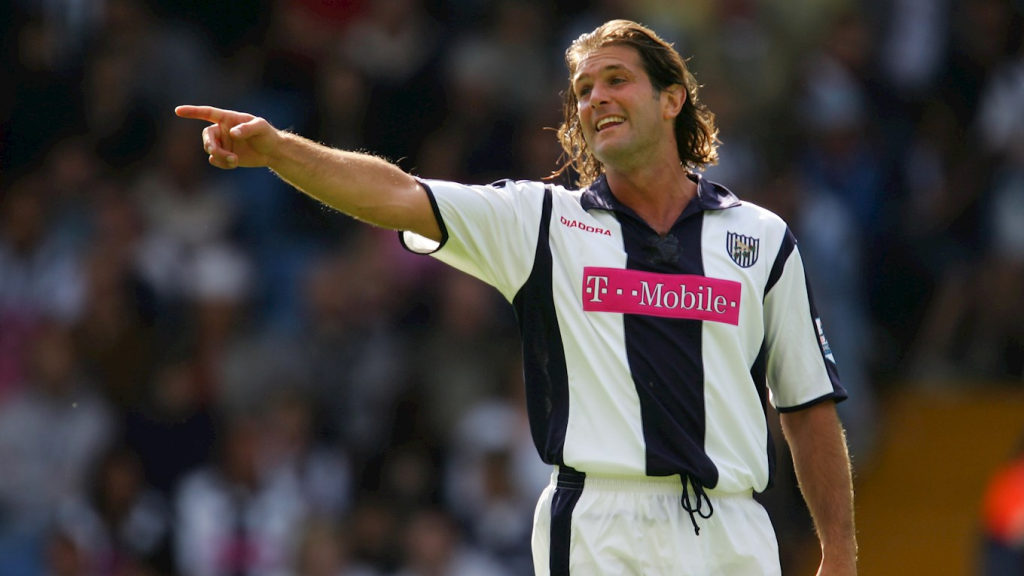
Andy Johnson’s Premier League goals drought is a product of early top-flight exposure, followed by years away from the highest level before returning to score again. Johnson scored on the final day of the inaugural Premier League season for Norwich City on 8 May 1993 against Middlesbrough, then spent years with various clubs and lower divisions. He eventually reappeared in the Premier League with West Bromwich Albion after they won promotion and scored again on 8 February 2003 versus Bolton — a wait of roughly a decade.
The long interval between Premier League goals reflects the structure of English football where promotion and relegation can remove players from top-flight opportunities for many seasons. Johnson’s career demonstrates that time away from the Premier League isn’t synonymous with a decline in ability; rather, it often mirrors the fortunes of clubs and the timing of promotions. For tracking Premier League goals, Johnson’s story demonstrates how historical gaps can form when players return to the top flight after substantial spells outside it.
2. Cristiano Ronaldo

Cristiano Ronaldo’s long interval between Premier League goals is an unusual case driven by a world-class career abroad rather than form issues in England. Ronaldo left Manchester United for Real Madrid in 2009 after scoring against Manchester City in May of that year, and he did not appear in the Premier League again until his high-profile return to Manchester United in September 2021, when he scored a brace against Newcastle.
That gap of 4,507 days between Premier League goals reflects more than a decade of success in Spain and Italy, where Ronaldo continued to score regularly at the highest level. In terms of Premier League goals specifically, his drought stands out because it is not the result of absence from football but rather prolonged elite performance elsewhere. When he returned and scored immediately, it highlighted the unique nature of this long wait: a global superstar’s domestic English tally paused not due to decline but because his club career had moved to other top leagues before a dramatic Premier League comeback.
1. Matt Jackson
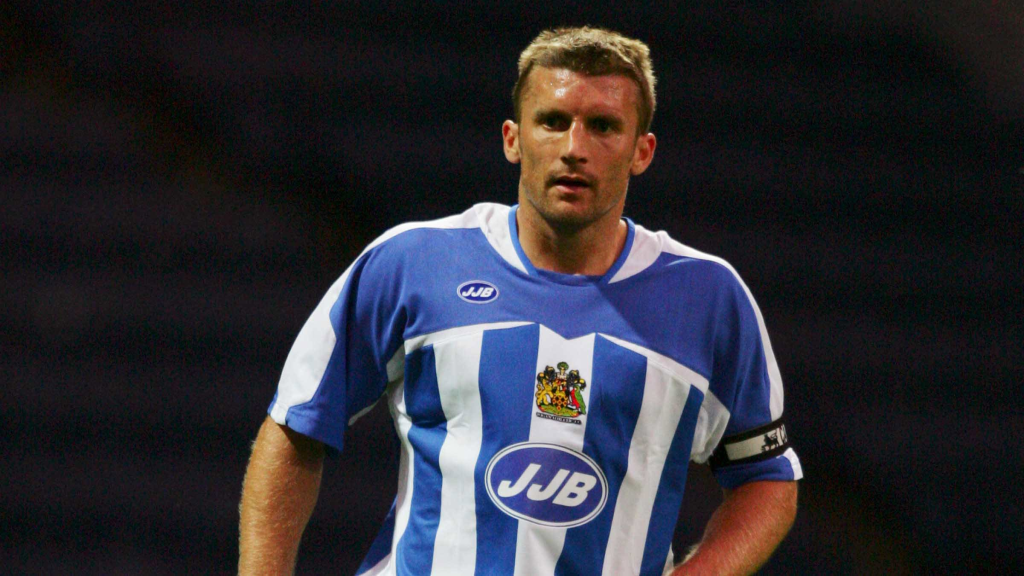
Matt Jackson tops the list of longest waits between Premier League goals with an extraordinary gap of 4,935 days. Jackson scored for Everton against Manchester City on 8 May 1993 during the first Premier League season, then spent many years away from the Premier League with loan moves and a transfer to Norwich City before eventually turning out for Wigan Athletic. On 11 November 2006 he scored versus Charlton — more than 13 years after his earlier goal.
This interval is the longest on record in the compiled list and is illustrative of how career moves, time in lower divisions and interrupted top-flight opportunities can combine to produce remarkable statistical droughts in Premier League goals. Jackson’s story is a case where longevity and changing club circumstances created a headline-making wait, and the eventual goal became a defining moment precisely because of the rare length of the drought.
| Rank | Player | Gap (days) | Previous Premier League goal (date & opponent) | Next Premier League goal (date & opponent) |
|---|---|---|---|---|
| 1 | Matt Jackson | 4935 | 8 May 1993 vs Man City | 11 Nov 2006 vs Charlton |
| 2 | Cristiano Ronaldo | 4507 | May 2009 vs Man City | Sep 2021 vs Newcastle |
| 3 | Andy Johnson | ~3230+ | 8 May 1993 vs Middlesbrough | 8 Feb 2003 vs Bolton |
| 4 | John Oster | ~3500+ | 20 Sep 1997 vs Barnsley | Feb 2007 vs Middlesbrough |
| 5 | Simon Charlton | 3433 | 10 May 1995 vs Man United | Oct 2004 vs Portsmouth |
| 6 | Peter Whittingham | 3234 | 6 Oct 2004 vs Portsmouth | 14 Sep 2013 vs Hull City |
| 7 | Stephen Quinn | 3033 | 13 Jan 2007 vs Portsmouth | May 2015 vs Arsenal |
| 8 | Ryan Babel | 3000 | Dec 2010 vs Aston Villa | 22 Feb 2019 vs West Ham |
| 9 | Jamie Carragher | 2884 | 16 Jan 1999 vs Southampton | 9 Dec 2006 vs Fulham |
| 10 | Gareth Bale | 2723 | May 2013 vs Sunderland | Nov 2020 vs Brighton |
FAQs
Why do these players have such long waits between Premier League goals?
Most long waits between Premier League goals are caused by transfers away from the Premier League, extended spells in lower divisions, injuries, or changing playing positions. Some players continued to score abroad or in other competitions, but those goals don’t count as Premier League goals, which produces long domestic gaps.
Are these waits measured in appearances or days?
This list measures waits in days between the two Premier League goals (from date of the first goal to date of the next). Appearance counts vary substantially — for example, Jamie Carragher’s wait included many Premier League games, while Cristiano Ronaldo’s long drought covered few Premier League appearances because he was playing abroad.
Do these gaps include cup or international goals?
No. The gaps refer specifically to Premier League goals only. Goals in domestic cups, European contests or international matches are not included in the Premier League goals tally used here.
Which position is most likely to have long waits between Premier League goals?
Defenders and defensive midfielders often have longer waits because scoring is not their primary role. However, movement between leagues and long absences from the Premier League can create extended droughts for players in any position.
How common are long gaps caused by playing abroad?
Relatively common among high-profile players who transfer to top clubs overseas. Time spent outside the Premier League can easily add several years to a player’s domestic goal gap, as seen with Cristiano Ronaldo and Gareth Bale.
